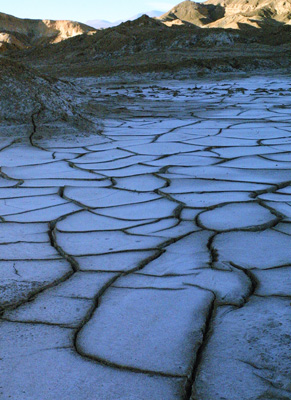The Salt Mountain Range lies on
the eastern flank of the 435 mile (700 kilometer) long Domeyko
Range, which runs parallel to the Andes to the west. Once the
bottom of a great inland sea, these mountains formed over the
past 2 million years through the activity of plate tectonics
beneath the earth´s surface. The range is therefore streaked
and dusted with white salt crystals.
Adjacent to the Salt Mountains and within a 15 minute drive
from San Pedro are Death Valley and the Valley of the Moon,
two popular geological features that are located adjacent to
the Salt Mountain Range.
Death Valley is an area surrounded by eroded cliffs, small hills
and sand dunes. Some of the dunes rise to over 300 feet (100
meters) in height, making this area a popular location for sandboarding.
The Valley of the Moon, 9 miles (15 kilometers)
to the northwest of San Pedro, is a small depression of 1,600
feet (500 meters), at an altitude of 8,600 feet (2,624 meters)
above sea level, surrounded by impressive cliffs with jagged
crests. The Moon Valley is a popular place to watch the sunset,
where visitors climb a 300-foot (100-meter) dune to access
the cliffs above. The floor of the valley is crusted with
mineral salt, and the surrounding hills also have a high saline
content, which captures the azure of the evening sky and reflects
it throughout the valley. The Robotics Institute at Carnegie
Mellon University and NASA also conducted tests on the new
martian rover Nomad here in 1997.
The unique geology of the cordillera and the
valleys are the result of deep transformations of the terrestrial
crust, produced by successive foldings of the lacustrine bottom
of the Atacama salt flats. In addition to the high saline
content of the area, the rock formations comprise layers of
chlorate, borate, calcium and clay, presenting diverse stratified
forms.
|
 |
|
photo by Christine Nguyen
|
|
The region is characterized by a number of dry salt
basins left over from the evaporation of ancient
inland seas. view
slideshow
|
|
|









